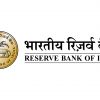Mehul Dani: Which 3 sectors account for most of the total loans of your bank in 2013-14?
 Yaduvendra Mathur: Exim Bank has seen its loan portfolio growing 16% to `75,873 crore in 2013-14 . Our exposure to ferrous metals and metal processing units, EPC services and textiles and garments accounts for 10.94%, 9.25% and 7.57% respectively of the total. The respective amounts are `6706 crore, `5674 crore and `4640 crore.
Yaduvendra Mathur: Exim Bank has seen its loan portfolio growing 16% to `75,873 crore in 2013-14 . Our exposure to ferrous metals and metal processing units, EPC services and textiles and garments accounts for 10.94%, 9.25% and 7.57% respectively of the total. The respective amounts are `6706 crore, `5674 crore and `4640 crore.
Overall, the sectoral exposures of the bank are fairly well diversified, since the bank finances a wide variety of industries. Notwithstanding this, it has always been our endeavor to finance emerging enterprises and sectors. Thus, for instance, we were at the vanguard in financing software companies during the 1980s when the Indian software industry was at its infancy. Similarly, we were among the first ones to finance the film industry when it was granted industry status. So tapping new and emerging sectors is an ongoing process for the bank.
How do you respond to the government seeking a relaxation in the Reserve Bank of India’s borrowing limit for Exim Bank?
Exim Bank’s quantum of lending, given its capital structure and liquidity norms, is, in effect, synonymous with its borrowings, and as such, the leverage ratio determines the bank’s business growth. The bank’s trend annual average rate of growth in its loan business has been in the range of 15%-20%. The current borrowing limit permitted by RBI viz, 11 times the bank’s net-owned funds (NOF) is valid up to 31 August 2014. It will then revert to the base borrowing limit of 10 times of NOF. At the latter level, the bank will have little headroom to grow its business during FY 2014-15. Hence the need for a relaxation in the borrowing limit by RBI.
What is the extent of impact that the sluggishness in the western world and growing uncertainty and risk averseness will have on India’s exports?
A ccording to W orld Tr ade Organisation, global trade grew at a sluggish pace of 2.1% in 2013, attributed to lingering impact of the EU recession, high unemployment in euro area economies (Germany being a notable exception), and uncertainty about the timing of the Federal Reserve’s winding down of its monetary stimulus in the US.
Slowdown in global demand partly resulted in slower pace of growth in India’s exports during 2013-14. Growing at 4%, it stood at $312 billion, up from $300 billion in the previous year. However, cross-countr y comparison shows that India’s global exports growth in 2013 was higher than that of countries like South Korea (2%), Russia (-1%), Thailand (0%), Malaysia (0%), Indonesia (-3%), Singapore (0%), Mexico (3%) and Brazil (0%).
In line with the projected pick up in global trade in 2014 and 2015, projected pick up in GDP of the US and the EU region also augurs well for India’s exports. Both the US and EU region account for over 30% of India’s exports. GDP of US is projected to improve from 1.9% in 2013 to 2.8% in 2014 and further to 3% in 2015. Similarly, GDP of Euro area is projected to increase from -0.5% in 2013 to 1.2% in 2014 and further to 1.5% in 2015. In emerging economies, which are also important trading partners for India, GPD growth is expected to pick up from 4.7% in 2013 to 4.9% in 2014 and further to 5.3% in 2015.
Growth in exports of developing economies, including India, therefore, is expected to be supported by rising import demand on the part of developed countries, with the US economy gaining momentum, and improving economic conditions in Europe. In addition, pickup in real GDP growth in developing regions July 2013, and moderation in imports of capital goods. With revival of capital flows and lower CAD, concerns about the financing of deficit in the current account have eased. Lower CAD is expected to result in positive business sentiments, improved consumer confidence, pick up Exploring Export Markets in both domestic and foreign investment, and recover y in growth thus giving further boost to exports growth.







